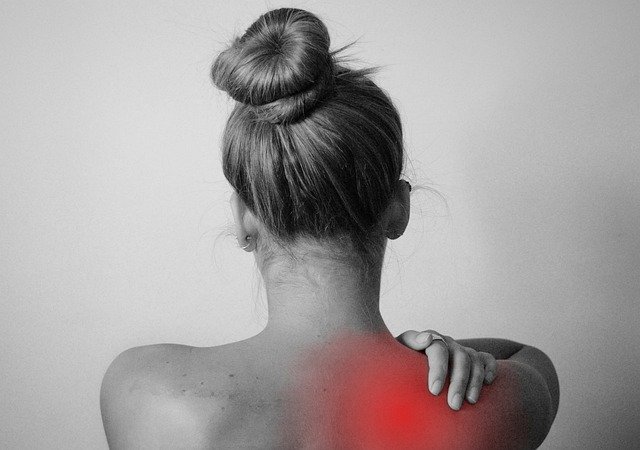Chronic back pain is a reasonably common condition. Its causes, however, can range from pre-existing injuries to poor posture and lifestyle habits. The vertebrae in the lower back are the biggest and strongest of all. Together with the pelvis, they form a stable base of support for the upper and lower body. Any form of stress, strain, injury, excessive weight, while standing or sitting upright is effectively borne by the lower back.
Sports injuries, bad posture, unhealthy lifestyles, and excessive force, all have a significant impact on the lower back. If left untreated, these injuries can result in some very severe cases of intense and chronic back pain.
Massage therapy is great for easing muscular stress, pain or discomfort. But it’s physical therapies like myotherapy that are the best ways to help alleviate chronic back pain. Read on to find out how myotherapy helps with chronic back troubles.
What is myotherapy for back pain?
Myotherapy includes a thorough assessment of your entire history to evaluate the cause of your pain. Designing a treatment plan to help alleviate your pain and reduce recurrence. The treatment can include trigger point therapy, soft tissue massage, joint mobilization, and nutritional advice, among other things. The success of myotherapy lies in its holistic, therapeutic approach and does not rely solely on one form of treatment.

How does myotherapy help my chronic back pain?
A key component of myotherapy, known as Neuromuscular Therapy is the trigger of the approach. Myotherapists apply alternating levels of concentrated pressure at various spasm points across the back, in 10 to 30-second intervals to effectively alleviate spasms. With this, the body is encouraged to release stored lactic acid and enhance blood circulation through the muscles.
Myotherapists possess in-depth knowledge of the human muscles and skeletal system, helping them trace the cause of your chronic back pain. Hence a patient needs to be completely upfront and transparent in terms of any discomfort and possible causes of the pain or injury, no matter how improbable. It is important to share all medical reports for them to be able to trace the issue as far back as possible, if possible, to the root cause of the condition.
Myotherapy for back pain session – Your first session
During the initial examination, your myotherapist will thoroughly examine and manipulate the back, as well as test the necessary reflexes. This is to see whether the injury is myofascial, i.e., purely muscular.
If a patient is faced with a non-reversible condition, such as sciatica or arthritis or age-related changes to spinal discs, the myotherapist designs a pain management program to reduce discomfort and increase mobilization.
Techniques employed by the myotherapist in the manual/physical therapy component of the myotherapy consultation include:
- Soft Tissue Therapy: This includes a wide range of techniques like trigger point therapy, lymphatic drainage, muscle energy techniques, neuromuscular techniques, and joint mobilization, among others.
- Myofascial Dry Needling: Very fine filiform needles (similar to those used in acupuncture) are inserted into certain trigger points to assist a release in chronic back pain or healing outcome.
- Myofascial Stretching: This involves incorporating several stretching methods and techniques that lengthen muscle fibres (especially short muscles) to help them increase the range of complete motion and eventually prevent further injury due to possible strain.
- Hot and Cold Therapy: This therapy includes using whirlpools, ice baths, heat and cold packs, heat lamps and wax baths.
- Electromechanical Stimulation: Soundwaves or electric currents are applied to the target area to produce a pain-modifying outcome. Low-level lasers, ultrasounds, and TENS are all a part of this component.
Additionally, as previously stated, the myotherapist will incorporate an integrated approach to sorting out your chronic pain. Lifestyle, the correct kind of exercise, nutrition, and basic posture all play a much larger role in terms of back pain. Thus, there is no single approach that will be entirely effective in curing chronic back pain. The integrated and all-round approach that myotherapy employs may well be an effective solution for your back pain.
What are the different types of myotherapy for back pain?
Myotherapy has evolved over the years from its ancient form of physical therapy. It has been influenced by several techniques, like the ones covered above, and as it has gone to include many of them, three primary types of myotherapy for back pain have emerged:
- The physical approach or the direct approach remains the predominant form of myotherapy. It is the direct application of innumerable techniques to soft tissue as a way of dealing with injuries and helping with chronic tension patterns thereby improving musculoskeletal health.
- The original approach is the Eastern approach which stands in sharp contrast to contemporary medicine because it has its genesis in a different ideology. The focus here is on the manipulation of the pressure points and the energy centres (or meridians) to kickstart the body’s natural healing processes and bring about a state of balance and well-being.
- Integration is the third approach and it is, quite literally, the combination or integration of several techniques covered above. This is a highly personalized and individualistic approach where the permutations vary by patient, therapist and the current state of the patient’s health.
When you go about considering which type of therapy would be best for you, understand that it takes effort and deliberation to figure out the best myotherapy for back pain. As you come to understand how myotherapy helps with back pain, you will realize that no two people respond in the same manner to the same treatment. Experiment with different therapists and treatments to find the one that works best for you.
How do I know I need myotherapy for back pain?
Myotherapy for back pain works by working on the soft tissues (muscle tissue) of the body and relieving the pain within them. Pain that originates in muscle tissue or the myofascial i.e. muscle fascia is referred to as myofascial pain.

Watch out for the following symptoms they might be an indication that you could benefit from myotherapy:
- Impaired mobility of joints
- Muscular numbness
- Persistent and deep aches
- Stiffness of joints
- Tightness of muscles even when relaxed
- A constant tingling or prickling sensation which can also be described as the ‘pins and needles feeling
- Myofascial trigger points are sore in muscle tissues that respond with pain to simple touch
What are some self-help suggestions when it comes to myotherapy for back pain?
While myotherapy for back pain is best administered by a professional, they alone can’t help improve your back problems.
During a myotherapy session, the professional will study your current state of health in detail. Throughout the treatment they are likely to suggest the following self-help measures for you to improve the functioning of your back muscles:
- Dietary changes to maintain a healthy weight and a state of wellbeing
- Heat or ice packs depending on the state of your muscles and the type of injuries
- Exercises as well as stretches which are most suited to your condition
- Several relaxation techniques which help promote healing and recovery
- Self-massages and how to administer the same
How do I find the most suitable professional for myotherapy for back pain?
Consider your therapist carefully and take into account their skill set, qualifications, experience and specialities. Be open with your therapist and never hesitate to change should you feel it’s no longer working. If you are confused about how to begin your search, start today with Avaana.



